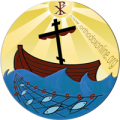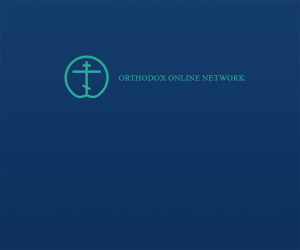مريم العذراء هي ولادة الإله. لم تلد الجوهر الإلهي بل جسد يسوع الذي صنعه الروح القدس في احشائها.
في “سر التدبير الإلهي” عرضت عقيدتنا في المسيح يسوع: أقنوم واحد في طبيعتَين. وانا شخص واحد في جوهرين هما الروح والجسد. انسب كل شيء إلى شخصي. أقول أبي وأمي وأخي وروحي وعقلي وذهني وفكري وجسدي ويدي وعيني واذني ورأسي وصدري…
أنسب ما هو روحي لديَّ وما هو جسدي أيضاً إلى شخصي. أقول : أنا احيا، أنا أكلت، أنا شربت، أنا فكرت، أنا فهمت، أنا، أنا، أنا،…
“أنا” شخصي هو مدار اموري جميعاً لأن روحي وجسدي قائماً في شخصي. ونقول في العذراء أنه والدة الإله لأنَّ يسوع أقنوم واحد.
رئيس رهبنة Taize البروتستانتية في فرنسا انشأ كتاباً بعنوان “العذراء أم الرب”. ترجمه إلى العربية صديقنا الآب خليل رستم. فيه تراجع كامل لمصلحة الإعتراف بأن العذراء هي والدة الإله. ان انتمى جميع البروتستانت المحافظين إلى ذلك كانت المسيحية اليوم متفية على هذا البند الإيماني الهام. تبقى شيع متهودة صنعها اليهود مثل شهود يهوه والسبتيين والمتجددين والمعمدانيين وأضرابهم. ستزول أما مطارق الحقيقة ونموّ التقارب المسيحي العام. فالشقة بين الأرثوذكس والكاثوليك واللوثريين تضيق جداً. عالم كاثوليكي مشرقي قال لي العام الماضي: “جميع اللاهوتيين الكاثوليك في الغرب قلبهم أرثوذكسي”. اجبته: “نعم”. ثم اخذت أعدّ له اقطابهم، فاجابني بالإيجاب.
لنعد إلى Virgin واسمائها في العهد الجديد:
1. قال لها الملاك أنها ستكون أم ابن العلي, أم ابن الله (لوقا 1: 31 و32 و 65).
2. قالت لها اليصابات: “أم ربي” (لوقا 1: 43).
3. قال الملاك ليوسف أن العذراء حبلى من الروح القدس بابن سيسميه يسوع لأنه سيخلص شعبه من خطاياهم (متى 1: 21). يوسف اليهودي يعرف أن أسم يسوع هو مختصر اسم “يهوشاع” أي “يهوه المخلص”. ويعرف أن مخلص الشعب وفاديه في العهد القديم هو “يهوه”. ويعرف كيهودي أن من يغفر الخطايا هو الله فقط (متى 9: 2-8). إذاً يسوع هو يهوه الفادي المخلص والله الذي يغفر الخطايا. العذراء هي أمه. إنها أم يهوه الله الفادي المخلص.
4. هي أم عمانوئيل (متى 1: 23). عمانوئيل هو الله.
5. سمّى الملاك يسوع للرعاة: “المخلّص المسيح الرب” (لوقا 2: 11)، لا “مسيح الرب“. المسيح الرب بالنسبة لليهود الرعاة هو “المسيح يهوه”. فعلى لسان اليصابات والملاك “الرب” هو يهوه. العذراء على لسان اليصابات هي “أم الرب” أي أم يهوه (راجع: يهوه أم يسوع؟).
6. “مريم أم يسوع” (أعمال 1: 14). يسوع هو يهوه المخلص، هو الله.
7. “أرس الله أبنه مولوداً من امرأة” (غلاطية 4: 4): ابن الله هو مولود مريم العذراء. هذا نصّ معادل لنص لوقا على لسان الملاك. إلا أن الإنجيليين رووا الأمور المتعلقة بالعذراء كمؤرخين حياديين نزهاء وموضوعيين بدون حماس. بولس لاهوتي يشرّع لنا تعليماً عقائدياً. يبدو لي في هذا النص مخطوفاً، مذهولاً بسرّ ولادة يسوع من العذراء إليكم النص الكامل:
(لما حان ملء الزمان أرسل الله أبنه مولوداً من امرأة، مولوداً تحت الناموس، ليفتدي الذين تحت الناموس، لننال التبني. وبما أنكم أبناء أرسل الله روح أبنه إلى قلوبنا منادياً: “يا أبَّا الآب”. فلستَ بعد عبداً بل ابن… وأرث لله بيسوع المسيح) (غلا 4: 4-8).
“حركة الجملة” أدبياً رائعة. (أرسل أبنه مولوداً من امرأة). إنها ذهول بتنازل الله لكي يرسل ابنه لتلده امرأة. قال: (امرأة) دون وصف. رفع شأنها للدلالة على جلال التنازل. لماذا تجسّد منها؟ ليفتدي الناس. هي واسطته لكي يتوصل إلى فدائنا. ولماذا الفداء؟ لننال التبني، لنصير أبناء الله فنناديه (أبَّاً). إنها لفظة آرامية لا تزال الأمهات في الشرق يُعلمنها الرضع لمناداة آبائهم بحنان ودلال ولطف. صرنا أولاد الله المدللين الوارثين له بموت المسيح. مريم العذراء في قلب هذا النص الفخم الجليل. هي بطن التجسد الإلهي شريكة المسيح في آلامه على الصليب (كما تنبأ لها سمعان الشيخ)، أم يوحنا الإنجيلي. إنها أمه بموجب قرار إلهي صدر من على منبر الصليب. فيه صارت أمنا جمعين. بها صرنا أبناء الله بالتبني. هي أيضاً وديعة لدى كل واحد منا في شخص أبنها يوحنا.
هل يستطيع الملائكة أن ينشدوا النشيد اللائق بها؟
في هذا السياق أيضا: آ- أبن الله صار من نصل داود (رو 1: 3). لقد صار ابن الله بواسطة مريم العذراء. فهي أم ابن الله. ب- المسيح –بحسب الجسد- هو من الإسرائيليين وهو أيضاً الله المبارك إلى الأبد (رو 9: 5). هذا نص قوي في إعلان ألوهة المسيح. فالمسيح مولود من مريم العذراء الإسرائيلية. وهو أبنها والله معاً.
وأم المسيح تتفرغ لعبادة أبنها لا للجنس ولا لطابور من الأولاد. والروح القدس الذي حلَّ عليها جعلها فردوسية الطبيعة لا تحمل وقر ولادتنا الفاسدة (المزمور 50/51: 7). فلا يمكن بعد أن أقرضت ابن الله جسداً بريئاً من العيب أن يعود جسدها بعد ولادته مشوباً بالعيوب الموروثة من حواء. فالطعن في بتوليتها وفي التبتل والرهبنة فكر أرضي مادي لا فردوسي. في الفردوس، لا زواج ولا توابعه، بل حياة ملائكية سعت إليها مريم منذ هذا العالم.
وتجدر الإشارة إلى أنه لم يرد ذكر لأخوة يسوع في السفر إلى أورشليم لما كان يسوع أبن 12 سنة (لو 2: 41-52). لا نسمع بهم إلا بعد بدء البشارة.
إذاً: العذراء هي أم ابن العلي، أم ابن الله، أم الرب المسيح، أم يهوه الفادي المخلص، أم عمانوئيل (أي الله)، أم يسوع.
ونحن نؤمن أن يسوع هو الله أيضا. فام ابن الله هي أم الله أيضاً.
بعد جميع هذه التسميات في العهد الجديد فليخف الله المرجفون.
في أوائل هذا الكتاب استشهدتُ بنص من القديس أبيفانيوس: كل أبرار العهد القديم كانوا في الجحيم. إنجيل لوقا واضح (16: 21): إبراهيم نفسه في الجحيم إنما في وضع أفضل من وضع الغني. لولا مات يسوع على الصليب لبقي إبراهيم وسواه فيها. ولكن وجد الله بين البشر فتاة تقتنص ابنه، فاقتنصته في أحشائها الطاهرة، فحبلت به وولدته، فصار واحداً منا حقيقة لا كما سخر الله من آدم (تكوين 3: 22). أتى الأرض وعاش معنا. وقال لنا أننا “أخوته وأخته وأمه” (متى 12: 50). مريم، بإرادتها، اختارت الله لا بالقضاء والقدر. لذلك اختارها الله.
العذراء جعلتني أخاه وأخته وأمه.
لا استطيع أن ابتكر لها مديحاً أعظم من تسميتها “والدة الإله”. كل مديح آخر ناقص. ابنة يواكيم وحنة المسكينين أصبحت والدة الله. أي منصب آخر يمكن أن تحتله إلى جانب الله ابنها؟ بلغت الذروة.
ولكن كيف امدح واشكر التي جعلتني أخاً وأختاً وأماً ليسوع؟ بل التي أيضاً جعلها يسوع أماً لي في شخص يوحنا الحبيب لدى الصليب؟
هي التي وصلت السماء بالأرض، فخرج إبراهيم وصحبه من الجحيم.
هي أمي وأبنها أخي. إذاً: بها دخلت السموات.
هذه التي انقذتني من الجحيم احبَّت الله واحبت البشر فوقفت واسطة بينهم. جمعتهم. صالحتهم. تصافحوا على يديها.
حين اطمر رأسي في التراب لأن خزي خطاياي يمنعني من رفع رأسي نحو السماء، فالى من التجيء إلا إليك لتتوسطي لد لدى أبنك؟.
اختفي من وجه يسوع خجلاً، ولكن اهرع إليك منبطحاً فتعرفين سؤالي.
مَن انتشلني من العطب والاخطار واليأس والامِّحاق؟ أنتِ.
من رفقني في لحظات الاختناق. أنتِ.
ولذلك ارهن لساني وقلمي، بل كل كياني لديك. وفي ساعة الموت اخطفي روحي إلى ابنك. واكبيني خلال البقية الباقية من العمر، فليس لي عون لدى ابنكِ مثلك.
فيك عظّمنا البتولية، فصارت مشتهى الساعين إلى الكمال ليكونوا جاثين أمام قدميك. بل صارت البتولية فضيلة طالبي التأله.
فسبحان الذي كلل بتوليتك بالحبل بيسوع، فأَلَّهَك وجعلك سيدة المخلوقات جميعاً.
وثقي أننا سنبقى إلى جانبك عند صليب أبنك مع يوحنا وحاملات طيب ولونجينوس قائد المئة لننظر النهاية في السماء، لا على الأرض.
هذه العقيدة:
الكنيسة استعملت منذ القديم لفظة theotokos “Mother of God“. إلا أن نسطوريوس (السوري من مرعش في تركيا الآن) ساند كاهنه الأنطاكي الذي قاوم التسمية في القسطنطينية. فأعلن المحامي أفسابيوس الحرب، فانتشرت رقعتها، فانعقد المجمع الثالث المسكوني في أفسس العام 431؛ فاسقط نسطوريوس من أسقفية القسطنطينية العاصمة واعتبره هرطوقياً. وهذه العقيدة وجميع العقائد التي أعلنها المجامع المسكونية السبعة لا تحتمل النقاش بل التفسير الأرثوذكسي القويم دون انحراف وألا كان السقوط هرطقة. الكنيسة لا تتساهل أبداً في شأن العقيدة ولا تساوم عليها إطلاقاً. فقد يُسقط علماني بطريركاً كما جاء الآن. العصمة للعقيدة الأرثوذكسية سواء نطق بها بطريرك أو مطران أو كان أو علماني أو راهب. الناطق بها هو المعصوم والمخالفون هراطقة ولو كانوا أباطرة وبابوات وبطاركة. وتاريخ الكنيسة خير شاهد.
وأكبر مظاهرة تاريخية لذلك جرت في القرن السابع الميلادي. الراهبان صفرونيوس الدمشقي ومكسيموس المعترف (من خسفين في الجولان) عارضا الإمبراطور (العملاق العسكري) هرقل* وزلمه البابا اونوريوس وبطاركة القسطنطينية والإسكندرية وأنطاكية وأورشليم. انتصر مكسيموس عليهم. فقد نجح في روما على يد صديقه البابا القديس في عقد مجمع لا تران (649) الذي جمع 105 أساقفة. وكانت قد انعقدت مجامع في أفريقيا. بلغ عدد المؤيدين خمسمائة أسقف. حرم المجمع المذكور البابا اونوريوس وبطريركي السطنطينية سرجيوس وبيروس.
حاول بطرس القسطنطينية جذب مكسيموس وهو في القاووش فدعاه إلى الإذعان –بما أن البابا والبطاركة والإمبراطور متفقون- وإلا حوكم. كان الجواب حاداً استشهادياً. اتهمهم جميعاً بمخالفة الإيمان القويم. فحوكم وقُطعت يده وخُلع لسانه ونُفي إلى بلاد الاز في جيؤرجيا (القوقاز) حيث مات في السنة نفسه في العام 662. وفي العام 680-681 انعقد المجمع المسكوني السادس فارَّ تعليمه وحرم البطاركة المذكورين وخلفاءهم من زملائهم في الهرطقة.
راهب قطع بابا وبطاركة ومطارنة وزمرة من الهراطقة: إنه سيف الإيمان والحقيقة الأقوى من البطش. الإعتراف بالإيمان الأرثوذكسية القويم هو الأساس. هو السلطة العليا: فقد رفضت الكنيسة مجامع عديدة لأنها غير أورثوذكسية: مجامع الهراطقة الآريوسيي، مجامع اصحاب المشيئة الواحدة، مجمع السنديانة ضد الذهبي الفم، مجمع 449 الداعم لأوطيخا، مجمع محاربي الأيقونات (754)، المجامع التي رفضها مرقس الأفسسي، فخلد مرقس وطوى التاريخ خصومه. فالحقيقة ليست مقصورة إلا على المعترفين بها. هؤلاء هم الشهود الامناء ليسوع المسيح، أياً كانوا.
فكل من خرج على تعليم الكنيسة المحفوظ لديها عبر نيِّف و 19 قرناً فرز نفسه منها. ومن فرز نفسه خصر. الذهبي الفم يحترم حرية الآخرين، فلا يسود على إيمانهم إنما هو مسؤول ان قصر في وعظهم. لا يسود كسيد وقاض. ولكن الذين يصنعون الإنشقاقات في الكنيسة هم مثل الهراطقة. يمزقون جسد المسيح إرباً إرباً ويخنقون المسيح. الكنيسة هي بيتنا الأبوي. لسنا فيها سوى جسد واحد ونفس واحد… الله يستجيب للمغَاط الذي يصلي من أجل الذي يغيظونه…” (الموعظة 11: 5-6 على أفسس).
بهذا النبل واجه الذهبي وباسيليوس وغريغوريوس اللاهوتي خصومهم، لا بالعنف، ولا بالضراوة، ولا بالاضطهاد. نفوسهم كبيرة، قارعوا الناس بالحجج والموعظة. كلام غريغوريوس (الموجة إلى محاربي الروح القدس) شهد عسل. كانوا في مركز السلطة ولكن ما كانوا سلطويين: صدور رحبة للجميع من صغيرهم إلى كبيرهم. هذا ما تحتاجه الكنيسة اليوم.
يا إلهي! يا إلهي! احفظني في الإيمان القويم لئلا أخرج عنه فأنفصل عنك. واحفظ المؤمنين في إيمانهم الأرثوذكسي القويم، وأنشر أنوارك على الناس اجمعين بشفاعة سيدتنا العذراء. آمين!
عيد قائد المائة لونجينوس 16/10/1995
1. الشرع الكنسي، ص510-511.
2. مايندورف 2: 366
3. موريه 3: 115.
4. تاريخ الكنيسة الجديد 2: 105 3-Mouret, Hist. generale de l`Eglise III, 105
5. ملحقنا على ترجمة المغبوط البطريرك الياس الرابع: “الصورة الإلهية لدى بالاماس.” وفي كتابنا “التجليلات في دستور الإيمان” عرضّ لموقف مكسيموس ولرأي فلاديمير لوسكي.
– الثابت تاريخياً أن هرقل ترجع قبل وفاته واتَّهم سرجيوس القسطنطينية (من سرمين ادلب) بالمسؤولية عن الأمر. وهكذا، زجّ قائداً حربياً ألمعياً في معركة مزَّقت الكنيسة. لما فتح نابوليون المانيا نسخ مخطط هرقل لفتح عاصمة فارس. وهكذا يحار المرء حين يوزِّع المسؤولية التاريخية، ودور الأباطرة فيها:
Lagier, L`orient chretien I, 378, Paris; 1935. Mouret, III, 113.
وتاريخ الكنيسة الجديد يتهم سرجيوس المسؤول الأكبر عن نكبة الكنيسة في القرن السابع. كان مونوفيسيتاً فقفز إلى أسقفية العاصمة التي لم تستطع منافسة المدن السورية قبل فوتيوس الكبير (891). ولذلك لا مجال للتردد الكبير في هوية مكسيموس المعترف السوري الذي ما استوعبه أحد تماماً قبل مواطنه يوحنا الدمشقي. إن استثنينا كيرللس الإسكندري (444) كان اللمعان اللاهوتي والفلسفي والعلمي، والرهباني والأدبي والشعري، والحقوقي والاقتصادي والتجاري (وبخاصة في القرون 6-8) من حظ السوريين في القرن 5-8 (راجع كتابنا: دمشق ولاهوت الأيقونة، وقريباً كتابنا “كنائس الشرق الأوسط: أصولها التاريخية”). فبقت مدرسة الإسكندرية بيد الوثنيين حتى انتزعها في العام 820 يوحنا فيلبون السوري (من أفاميا) فصارت للمسيحيين. ولما اصدر الإمبراطور جوستيانوس مجموعته الحقوقية (50 كتاباً) بين 528 و533 كان رؤساء اللجان جميعاً من أساتذة بيروت يعاونهم اساتذة القسطنطينية. العمل جبار في زمن قصير. المجموعة أساس الحقوق حتى يومنا في أوروبا (الدكتور محمود عبد المجيد المغربي، تاريخ القوانين، ص 161-164 و195-199؛ طرابلس، لبنان). وقفز السوريون إلى المناصب، فاحتل 4 عرش البابوية طيلة 48-49 عاماً في قرن (641- 740). واحتل 3 بالتتابع أسقفية العاصمة (381-406) وو….

